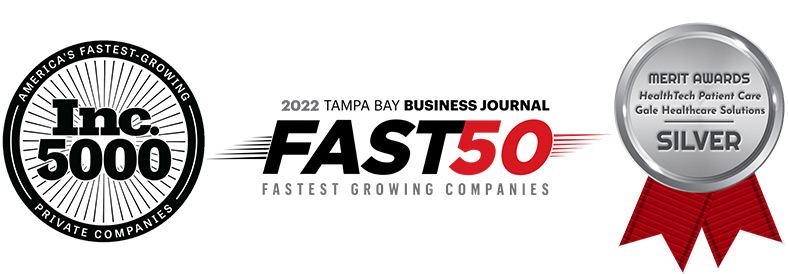
Inc. Magazine – Masters Article | May 31, 2023
By Tony Braswell
For decades, I ran a small nurse staffing business in Tampa, Florida. I sat at my desk, wrote notes on paper, and made countless telephone calls to match nurses with healthcare facilities that had open shifts.
All of that changed after my son told me he went online to buy a bottle of ketchup. That conversation sparked the idea that transformed my company, leading me to create an on-demand platform that has transformed our industry.
Here are some insights any leader can use from my experience with a ketchup bottle, a Chick-fil-A booth, and a midnight meeting.
The ketchup bottle
In 2016, well before the pandemic and before online shopping was as commonplace as it is now, my son told me he bought a single bottle of ketchup. Online. Delivered to his college apartment.
To me, it sounded odd and too expensive! To my son, it seemed perfectly normal to take advantage of the convenience and speed that technology offers.
I had just spent hours on the phone trying to find a nurse to fill an open shift at a nursing home—an everyday challenge for my business. When I heard about that ketchup order, a light bulb went off. We were doing this all wrong.
I began looking at how technology was fundamentally changing all sorts of transactions, from shopping, to renting a movie, to finding a ride. I applied those concepts to my business, and doing so enabled us to not just grow, but to scale to a degree I never would have thought possible. What started as a small company with a few hundred nurses serving local clients has grown to be a company with more than 60,000 nursing professionals providing patient care in thousands of healthcare communities across the country.
Using our on-demand technology, healthcare providers post open shifts, and nurses use an app to pick the facilities and hours that are best for them. After decades of pen and paper, a smartphone app and push notifications have transformed this industry. Presenting on How to Lead [Not Just Survive] Digital Transformation, Pamela Hinds suggests that digital transformation is not just driven by technological innovations. The co-director of Stanford University’s Center on Work, Technology, and Organization correctly notes it’s also driven by creating a culture that encourages innovations to improve the customer experience.
The lesson: Don’t miss your ketchup bottle moment. Be open to seeing how your business can be transformed. Trust your instinct, and stay agile enough to test new ideas
The Chick-fil-A Booth
Once a week, I have breakfast with three men I met at church. For years, we’ve sat in a booth at a local Chick-fil-A, and talked about our ideas and life’s highs and lows. Through our honest conversations, we’ve built a mutual trust.
Honest feedback has been the key to our relationships. If you have a bad idea, they let you know. If you have a good idea, they offer encouragement and suggestions. The morning I told them my idea for creating an app for nurse staffing, the feedback started flying.
The tech guy in our group immediately confirmed that this idea had potential. Drawing from their professional experiences, this small group helped me chart the next steps. That gave me real momentum.
In his book Never Eat Alone, author Keith Ferrazzi explains that the most successful people prioritize relationships—frequently connecting with colleagues, friends, and people outside their businesses to learn and grow, with the mindset that everyone wins. A good network isn’t about having thousands of connections. It’s about having people you can talk to about new ideas and challenges you can’t solve alone.
The lesson: Build a network of people you can trust.
The midnight meeting
I may be a healthtech entrepreneur, but my heart and soul will always be serving nurses and nurse aides that work so hard to provide care for others.
My service mindset is based on getting to know so many of these caregivers individually. But one situation in particular stands out—a midnight meeting I had with a nursing assistant in the pen-and-paper days.
Like many caregivers, she was doing all she could to balance work, family, and bills. She called me late one night and told me she had to have her rent by morning. Otherwise, she and her kids would have to move out. I got in my car and took her the pay she had earned that day.
That meeting, and others like it, never left my mind. Many of our nurses and nurse aides were living paycheck to paycheck, and couldn’t wait until a week—or longer—to get paid. As our technology evolved, I challenged our team to solve this problem. After more than a few dead-ends and some breakthroughs, we succeeded. Our technology empowered caregivers to create their own schedule, and to get paid the same day.
Today, our nurses are paid electronically within minutes of the end of their shifts. Our goal is to have them paid before they get to their car.
This is “design thinking” at work. At Harvard Business School, they break design thinking into four phases: clarify, ideate, develop, and implement. And it’s always driven by the person who’s facing the issue. Talk to your users. Insert yourself into midnight meetings. And ask yourself: How can we solve their problem?
The lesson: Know your customers and meet their needs.
This year, the Chick-fil-A where we began is being renovated. The booth where we sat, once destined for the trash, will be placed inside Gale Healthcare’s new corporate headquarters. I’m confident conversations in that booth will do more than remind us of how this all started—it will help us make the most of our next “ketchup bottle” moment.



